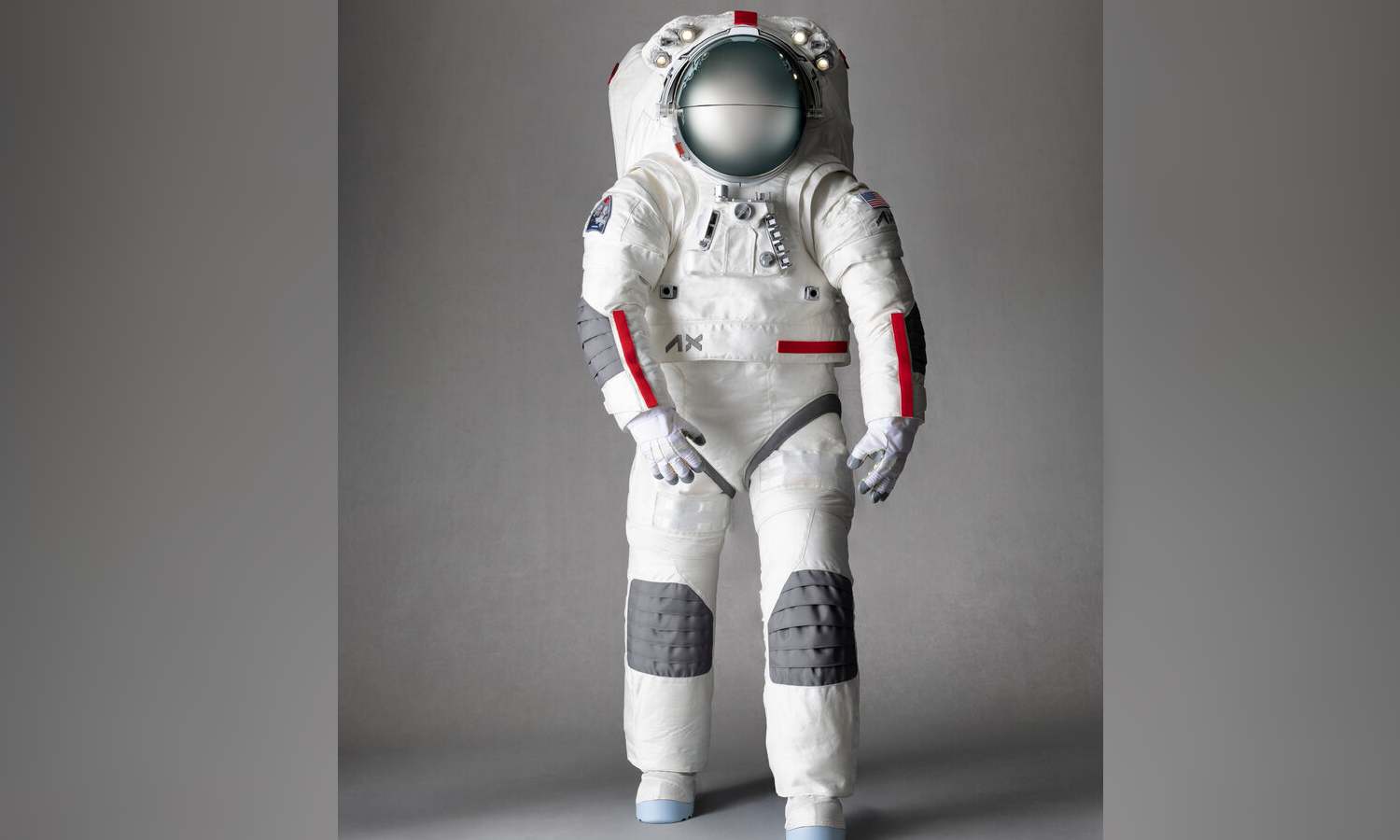Space: The Final Fashion Frontier
“It is a revolution in the design of spacesuits,” said Russell Ralston, the executive vice president for extravehicular activity for Axiom Space, the company responsible for the suit.;

The spacesuit designed by Axiom Space with Prada's collaboration, which NASA will use for the Artemis III lunar mission
Vanessa Friedman
In its quest to shape the aesthetics of everything, the fashion world has extended its glossy, well-decorated tentacles into all sorts of unexpected areas: sports, film, hotels, furniture, publishing. And, as of Wednesday, space. The cosmos is not just the final frontier, apparently. It’s the final fashion frontier.
Or so said Lorenzo Bertelli, the chief marketing officer of Prada, before the unveiling of its most recent collaboration: the Axiom Extravehicular Mobility Unit spacesuit, otherwise known as the spacesuit that NASA’s astronauts will wear when they walk on the moon during the Artemis III mission in 2026.
“It is a revolution in the design of spacesuits,” said Russell Ralston, the executive vice president for extravehicular activity for Axiom Space, the company responsible for the suit. It’s sort of like the Lamborghini of spacesuits: streamlined, motile, kind of sporty (relatively speaking). What it is not, however, is an obvious runway brand extension.
The white suit — the final version of a prototype first teased last year when it had a dark covering to hide its outer layer — with articulated armadillolike gray patches at the knees and elbows, a cropped top, selectively placed red stripes and glossy silver visor, has more in common, at least at first glance, with previous spacesuits than with anything seen on the Prada catwalk.
Even if the most recent Prada show did feature the sorts of face protectors that called to mind sci-fi royalty, and silver foil skirts with giant comet-shaped cutouts. Even if fashion has long had a fascination with the romance and fantasy of space exploration — ever since designers André Courrèges and Paco Rabanne made orbital style a signature in the 1960s.
Even if it started “as a sort of joke,” said Bertelli, the man behind the partnership (and the elder of Miuccia Prada and Patrizio Bertelli’s two sons). A few years ago, he said, he was thinking about how to leverage the 20 years of research and billions of euros of investment Prada had devoted to its Luna Rossa America’s Cup team and related Linea Rossa apparel line. As it happens, Luna Rossa means red moon, which led him to thoughts of space, which led him to ... Mars.
“But then I realized the moon was much closer,” Bertelli said. “Our group has disrupted a lot in the past,” he continued. “Maybe this is another opportunity where we could disrupt a bit.” So he reached out to Axiom, which had just bid for the NASA contract.
Axiom was “a little surprised,” Bertelli said. Still, Ralston said, Axiom quickly realized that a partnership with a fashion brand “actually makes a lot of sense, because a spacesuit is a unique thing. “It blends science and engineering but also art, all crafted around the human body,” he continued. “The backpack is very rigid, but the suit portion has to be flexible. It has to accommodate men and women of all different sizes. It has to move. It has to look good.”
Also, he said, “it’s a symbol. It’s an icon of our society.” It’s the part of space travel to which most consumers relate. And the leap from sports to space is less dramatic than it may initially appear, Bertelli said. Past Prada employees who worked on Linea Rossa have moved on to jobs at SpaceX and Boeing. At the same time, the brand’s expertise in crafting made-to-order, personalized garments proved to be an asset when crafting made-to-order, personalized spacesuits.
About 10 Prada employees worked full time on the spacesuit, traveling back and forth between Milan and Houston, where Axiom is based, focused primarily on new materials and sewing techniques. Though the final design prioritizes function and technical specifications over style, there are Easter eggs for Prada devotees, including the carefully placed red stripes, which nod to the Linea Rossa logo (and serve to distinguish the commander from the rest of the crew; other crew members would wear stripes of a different color). Miuccia Prada and Raf Simons, the brand’s co-creative directors, said they were particularly excited about that dual symbolism.
“This is really, I think, the opportunity to make space closer to people,” Bertelli said. “Sometimes, a lot of stuff starts as a kind of a game, and then it becomes something more. There is a risk, but we take that risk.” Bertelli, a former race-car driver who joined the family business in 2017, has a visceral familiarity with risk. Axiom and Prada see this as the first step in a potential new business opportunity. “The space economy is not something just for companies that make rockets,” Ralston said. “In the future, I’m 100% sure we’re going to have more and more business-use cases where we need to go in space.” And all of those people involved in all of those business-use cases will need something to wear.
Certainly, both sides are committed to continuing the partnership. “We have also been studying the design of other complementary objects for the mission, which will be unveiled in the coming months,” Miuccia Prada and Simons wrote in an email.
Bertelli said: “This is the beginning. What we are going to try now is test ourselves in this environment. If we see that we are good enough, it could be a strategic asset. It’s not going to change our profit and loss or our top line for the moment. But you never know if you never start.” One small step for man, one giant leap for fashionkind.

